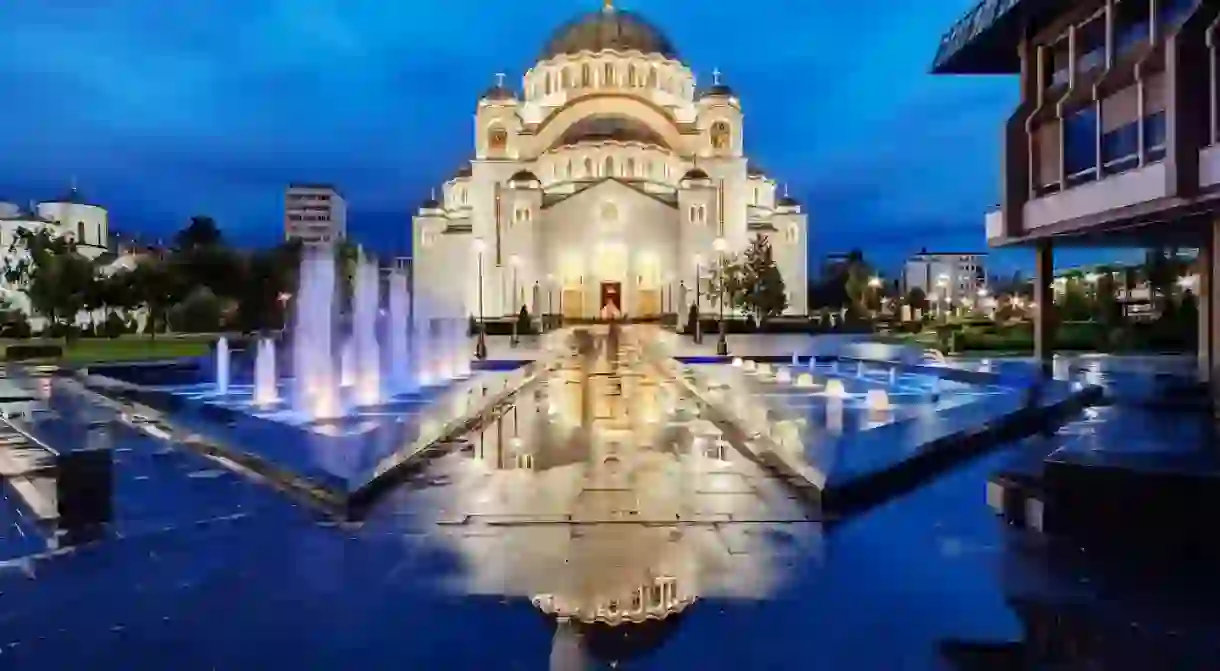The Seven Wonders of Serbian Architecture

We’ve all heard of the Seven Wonders of the World, but what of the Seven Wonders of Serbia? There are actually two lists that come under such a heading, one for nature and one for construction. The nation held a contest for both in 2007 and 2008. These are the finest examples of Serbian construction.
Belgrade Fortress
The main event when it comes to tourist attractions in the capital, the Belgrade Fortress (also known as Kalemegdan) hasn’t always been about strolling and watching the sunset. It was here that Belgrade was born, and the city has grown around the riverside spot over the centuries since. It has survived countless wars and battles, and today houses some of the finest monuments, museums and sights in town.

Church of St. Sava
Sticking with the capital, nothing dominates the Belgrade skyline like the monolithic Church of St. Sava. The temple was built on the spot where its namesake’s remains were burnt by the occupying Ottomans, and it is well and truly the centre of spiritual life in the White City. The interior is unfinished and adds an extra layer of intrigue to it, but the exterior is more than enough to demand photos and masses of respect.

Studenica
The history and autonomy of the Serbian Orthodox Church is close to the heart of the Serbian nation, and nowhere is this best displayed than in the many monasteries that dot the luscious nature of the country. Studenica is one of the finest, a majestic complex that impresses as much as it relaxes. A bonafide UNESCO World Heritage Site, Studenica was founded in 1190 by the man who established the medieval Serb state, Stefan Nemanja himself. Lofty beginnings for a suitably lofty spot.

Subotica City Hall
Subotica often gets overlooked in favour of Novi Sad, but those sleeping on Serbia’s northernmost town are missing out on a true gem. The City Hall is the best example of Art Nouveau architecture in the whole country, which is saying something. It was built between 1908 and 1912, showcasing remarkable attention to detail and an appreciation for the elegant. Small town symbols don’t get much better than this.

Gamzigrad
From 20th century Art Nouveau architecture all the way back to 3rd century Roman compounds. Gamzigrad is many things in one, and rightfully takes its place amongst the region’s most important archeological sites. There is plenty to get lost in here, including palaces and some of the finest mosaics in the area, not to mention the majestically named Grand Temple. The site was originally known as Felix Romuliana.

Visok Dečani
Located in the disputed territory of Kosovo, Visok Dečani is another medieval monastery that exudes tranquility and peace. That peace has been in peril since Serbia lost control of Kosovo in 1999, with frequent attacks on the monastery by Albanian extremists. The monastery was established way back in the first half of the 14th century by King Stefan Dečanski, and his remains are found here.

Šargan Eight
While the previous six wonders all doff their respective caps to spirituality and religion, our final stop on this tour of glorious Serbian construction is all about unadulterated design. The Šargan Eight narrow gauge railway in Mokra Gora is a marvellous piece of of work, and one that supposedly resembles a figure eight from the sky. It is a short train ride away from Drvengrad, a village famously constructed by Emir Kusturica for his 2004 film, Life is a Miracle.














